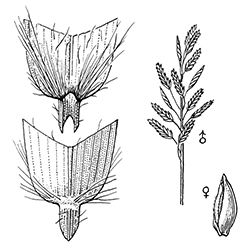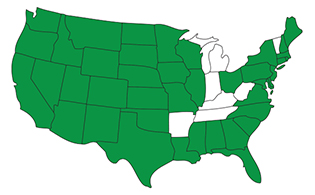

Saltgrass
Distichlis stricta
Saltgrass is a perennial grass that can become a lawn weed in places where it is unwanted. Also referred to as Inland Saltgrass, Seashore Saltgrass, Spike Grass, Alkali Grass or by its scientific name, Distichlis stricta, this grassy weed can be considered invasive.
Identify

Rhizomes

Folded

Hairy
Saltgrass can be identified as a low-growing, wiry, tough, perennial grass—and occasional lawn weed—that forms dense sod. Its ligule is short in the center, though very long on the edges, and its collar is broad with very long hairs. Saltgrass sheaths are compressed and flattened. Its stiff, vertical blades are short, sharply pointed and either flat or folded. Saltgrass is unique in that male and female plants generally grow in separate patches.
Life Cycle
Saltgrass often grows in saline areas, brackish marshes, salt flats and sometimes lawns and landscaping. Saltgrass can be found in most parts of the continental United States and thrives along the coasts of the Atlantic and Pacific oceans and the Gulf of Mexico. These perennial grasses can germinate and spread from seeds, but they also produce a root structure (tubers, bulbs or corms) that can birth new weeds from your lawn's surface (using stolons) or from underground (using rhizomes). Perennial grassy weeds like Saltgrass live two or more years and have a deeper root structure that can give rise to new weeds—even if you no longer see the weeds in your lawn.

Control
Saltgrass becomes an invasive lawn weed in situations where it is unwanted. This grass-like weed is difficult to manage when relying on cultural weed control methods such as hand-pulling weeds or proper mowing and watering techniques. For effective weed removal, professionally selected and applied weed control treatments are your best bet for eradication.







